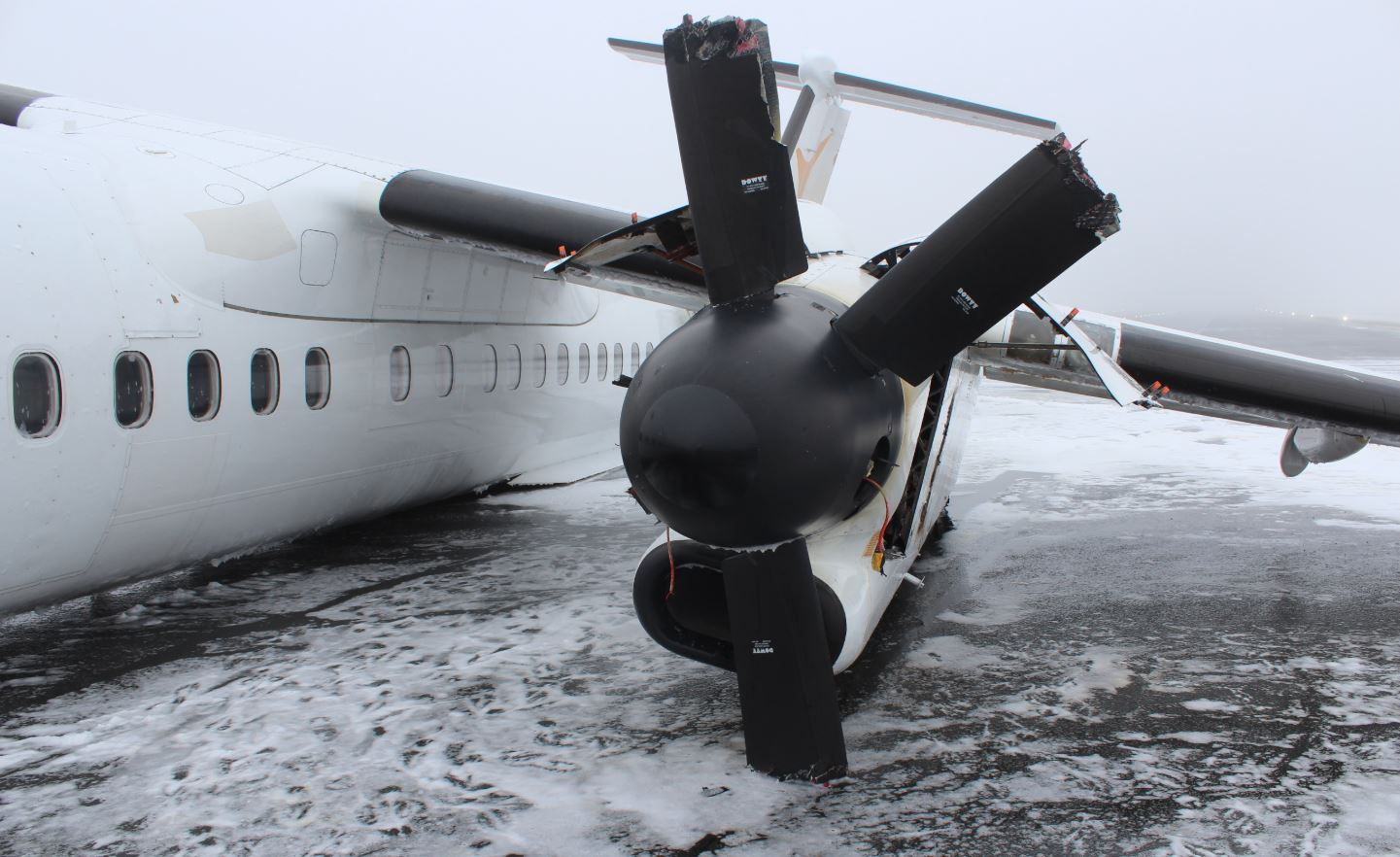Left main landing gear collapse
PAL Airlines Ltd.
De Havilland DHC-8-402, C-GPNA
Halifax/Stanfield International Airport (CYHZ), Nova Scotia
The occurrence
On 28 December 2024, a De Havilland DHC-8-402 aircraft operated by PAL Airlines Ltd. departed from St. John’s International Airport (CYYT), Newfoundland and Labrador, on a flight to Halifax Stanfield International Airport (CYHZ), Nova Scotia.
During takeoff from CYYT, the left outboard tire failed, leaving fragments on the runway. Neither the blown tire condition nor the tire debris on the runway in St. John’s was noticed during the flight, and the aircraft continued to its destination.
After touchdown on Runway 23 at CYHZ, the blown tire imbalance produced a vibration that caused the left main landing gear stabilizer brace to become unlocked and allowed the left main landing gear to collapse. As the landing gear collapsed, the left propeller contacted the runway surface, resulting in a fire in the left engine. The crew then activated the engine’s extinguisher system.
The 73 passengers and 4 crew members on board were evacuated with no injuries reported. The TSB is investigating.
Safety communications
Safety Advisory Letter
Media materials
Class of investigation
This is a class 3 investigation. These investigations analyze a small number of safety issues, and may result in recommendations. Class 3 investigations are generally completed within 450 days. For more information, see the Policy on Occurrence Classification.
TSB investigation process
There are 3 phases to a TSB investigation
- Field phase: a team of investigators examines the occurrence site and wreckage, interviews witnesses and collects pertinent information.
- Examination and analysis phase: the TSB reviews pertinent records, tests components of the wreckage in the lab, determines the sequence of events and identifies safety deficiencies. When safety deficiencies are suspected or confirmed, the TSB advises the appropriate authority without waiting until publication of the final report.
- Report phase: a confidential draft report is approved by the Board and sent to persons and corporations who are directly concerned by the report. They then have the opportunity to dispute or correct information they believe to be incorrect. The Board considers all representations before approving the final report, which is subsequently released to the public.
For more information, see our Investigation process page.
The TSB is an independent agency that investigates air, marine, pipeline, and rail transportation occurrences. Its sole aim is the advancement of transportation safety. It is not the function of the Board to assign fault or determine civil or criminal liability.

